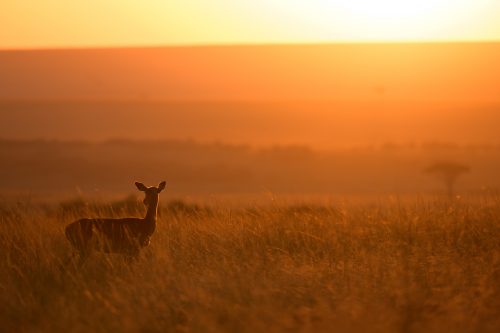Elephants remember the best routes across a landscape, and their repeated journeys carve well-worn paths on the terrain. Numerous animals, including humans, use these 'elephant highways'. Legend has it that many of Africa's original roads are said to have followed these ancient paths and can still be seen today as they crisscross the Amboseli ecosystem of southern Kenya.
The Greater Amboseli region is semi-arid, and elephants are continually on the move in search of food and water. Two abundant oases are Amboseli National Park and Kimana Sanctuary, the home of Angama Amboseli.
The space between them is called the ‘Kimana Corridor’ — a vital and safe passage rich in food for elephants and other wildlife moving between the two. Just as animals travel between Amboseli Park and Kimana Sanctuary, so do guests at Angama Amboseli. But while the elephants take the direct route, Angama’s guests haven’t had that option until now.
A newly completed road now allows guests to follow the footsteps of the elephants through community conservancies that safeguard the Kimana Corridor. Built by Big Life Foundation, Angama's conservation partner who works with local communities to protect this vital passage that runs through the 'pinch point', it strengthens the conservation efforts of the safe passage of animals between Amboseli National Park, Tsavo West and the Chyulu Hills. The pinch point is a mere 85 metres wide. Here, the corridor squeezes between farmland and crosses a busy highway, a remarkable example of human and wildlife co-existence.
It's a route Big Life and Angama envisioned from the start when they first identified Kimana Sanctuary as a potential site for the lodge. Thanks to funding from the United States Agency for International Development (USAID), this vision became a reality.
Though building a road through a conservation area might seem counterintuitive, the conservancy access fees collected from users will directly fund conservation projects and provide income for landowners, encouraging them to keep the land natural and open for wildlife.
It’s an exciting time in the Amboseli ecosystem as Big Life and others support the development of community conservancies, from the construction of roads to other foundational infrastructure. This is being done in a considered and sustainable way to avoid the 'over-tourism' plaguing some of Kenya's other destinations and to ensure that tourism provides maximum benefit for local communities and wildlife conservation.
This is how we ensure that there will still be elephants to follow hundreds of years from now.
Filed under: Stories from Angama
Subscribe for Weekly Stories
Comments (0):

Rates & Availability